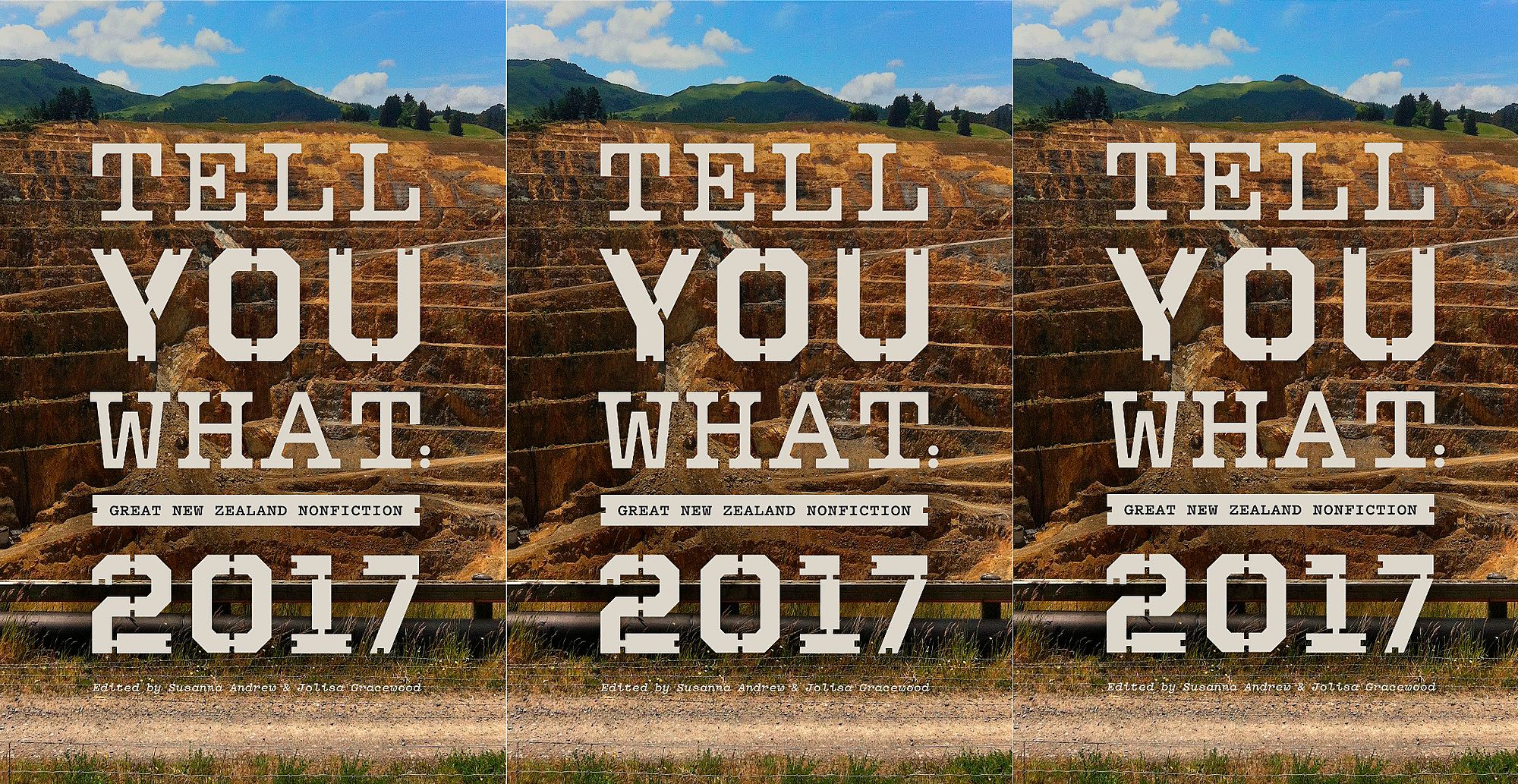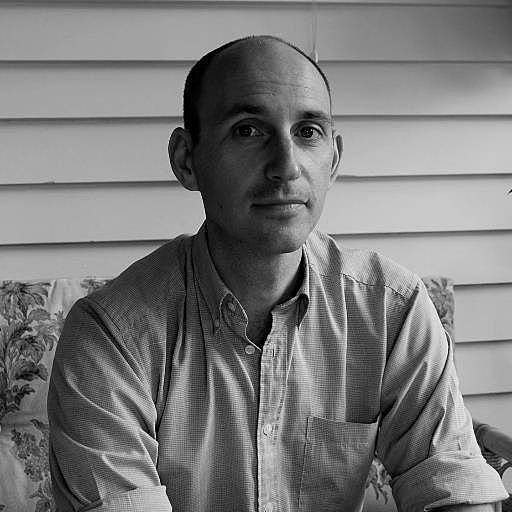Great New Zealand Nonfiction: A review of Tell You What
John Summers reviews Tell You What: Great New Zealand Nonfiction 2017 and finds some cracking long-form writing.
John Summers reviews Tell You What: Great New Zealand Nonfiction 2017 and finds some cracking long-form writing.
Not long after I agreed to review Tell You What 2017, the publishers, Auckland University Press sent me a copy of the Antony Byrt’s This Model World instead. It seemed like an easy accident in what is a time of glut, an overflow of good nonfiction. As well as Byrt’s travels in New Zealand art, we’ve already had the anthology Extraordinary Anywhere, Adam Dudding’s memoir, Ashleigh Young’s collection and Steve Braunias’ The Shops to name a few.
The Tell You What series, of which this is the third volume, is a handy skim across the top of that overflow, pulling together a collection that ranges from feature articles to essays, blog posts to travel stories. It’s creative non-fiction – such a horrid grab bag of a label, but one that does work in signalling non-fiction writing that doesn’t follow a template, pitches beyond the specialist, and more often than not, foregrounds the author (almost all of the pieces in Tell You What 2017 are in the first person).
These same qualities also mean it’s well equipped to go beyond the stories we read day-to-day, and to instead reveal secret histories, unofficial versions, and the way the personal response differs from the popular narrative. Sistar Six’s memoir of homelessness holds more nuance than any statistics allow, while time itself ‘stretches, warps, balloons’ in Ashleigh Young’s brilliant, touching mediation on grief, life and loss. Our most cherished myths take a knock too; Greg Bruce examines a lifelong obsession with rugby with searing honesty. Moana Maniapoto shows that tikanga is no rulebook but something evolving, and, ‘every hapū has their own specific tikanga, their own way of doing things.’
In short, ‘It’s Complicated,’ as Maria McMillan writes. She shares quotations, observations, plot summaries for four novels published in the 1970s and a response to Yvonne Todd’s photography to build a compelling essay about a culture set on decluttering and simplifying discussion about women’s bodies, relationship consent and choice. ‘The slogan,’ she writes, ‘the meme, the vainglorious rule, the 140 characters that threaten to become not an exercise in summary, or pithy articulation, or brilliant brevity but to become the thing itself.’
Tell You What 2017 offers proof that brevity hasn’t won completely, and that we still have plenty of publications that give their writers room to ponder.
Tell You What 2017 offers proof that brevity hasn’t won completely, and that we still have plenty of publications that give their writers room to ponder. These include the established literary journals. McMillan’s piece was originally published in Sport, and another highlight of this anthology is Tracey Slaughter’s Landfall essay award-winning ‘Ashdown Place,’ which describes a 70s childhood of ‘pyramid schemes and slogan tees, skatopia and blue pencil’ darkened by an adult world of key parties and not-so-free love.
Our papers and magazines are still publishing some cracking long-form writing too. I can’t say I spend much time in the sports pages of the Herald, and so I’m thankful that Tell You What 2017 alerted me to Dylan Cleaver’s ‘Flights of Fanciers,’ in which he visits a group of pigeon racers at a South Auckland Working Men’s Club. Along the way, he effortlessly introduces the history of the sport, while teasing out the enthusiasm of those fanciers, all without recourse to cynicism. For another snark-free examination of a much-maligned hobby, see Dylan Horrock’s excellent piece on Dungeons and Dragons.
Just as Cleaver’s piece was a reminder not to overlook sports writing, Jenni Quilter demonstrates the possibilities of travel writing with ‘Baðstofa.’ It’s a genre that doesn’t get a lot of love in New Zealand, usually represented by cliché-heavy pieces in the paper with the inevitable coda: ‘The writer travelled courtesy of…’, or endurance accounts of the single handed, trans-Atlantic kayaking type. But in the right hands, it is as flexible and nuanced as any form. Quilter uses a journey in Iceland as the frame over which she stretches memoir, essay and a fascinating history of slavery in Iceland. The title comes from what was a ‘main room, a collective living room and bedroom’ in traditional Icelandic homes, an ‘architectural response to the world outside.’ And in the same way, Quilter’s piece turns inward. The history of piracy and violence, the experience of cycling across the rugged landscape turns thoughts to home and to family.
Anthologies of this kind can be contested things, marked by their absences. Perhaps this is why this book is called ‘Great New Zealand Non-Fiction,’ rather than ‘best’ like the annual American series of essays that inspired it. But if there is a notable absence, it’s the editors themselves. They preface the book with three scant paragraphs that are a kind of ditto to their previous two introductions: ‘Once again, we dug deep and roamed widely.’ I would be interested to hear where they roamed, and what they were digging into. What informed the choice they made - was it purely quality or were they aiming for a picture of our preoccupations? But even more puzzling is the mystery of that ‘2017’; this book was published in 2016, and the pieces in it date back to 2015.
My guess is that both the title and that brief intro are efforts to package this material up for an audience that might be put off by something labelled ‘essays,’ and to ensure this book makes its way into a Christmas stocking or two. It’s a worthy aim, and Tell You What 2017 would make a great gift. It’s hard to imagine a reader who wouldn’t find something to enjoy. That said, I already have my presents sorted – not long after I started this review I was given yet another copy of This Model World. Mum, please act surprised.
Tell You What 2017 is edited by Susanna Andrew & Jolisa Gracewood and published by Auckland University Press. We are currently giving away a copy of Tell You What 2017 in our Xmas book budle. You can enter here.

